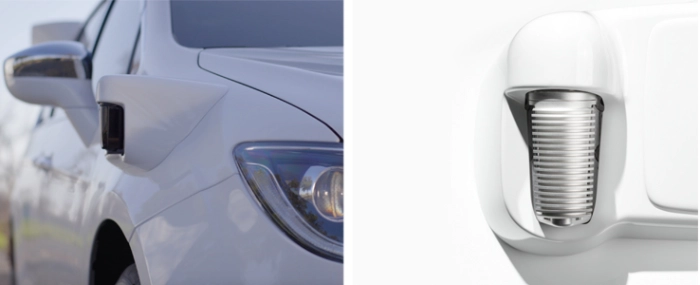
© Waymo
General |
Waymo lidar sensors venturing beyond AV market
The company’s proprietary 3D lidar sensor, Laser Bear Honeycomb, is now being offered to multiple markets and applications outside of self-driving vehicles, including robotics, security, and agricultural technology.
Laser Bear Honeycomb, which Waymo is calling a “best-in-class” perimeter sensor, is one of three different types of lidar sensors the company has come up with since it began its sensor-technology development surge in 2011. Lidar sensors measure distance with pulses of laser light.
The Laser Bear Honeycomb will be offered to select partners.
As stated in a press release, among the new technology’s key benefits are three that could come in pretty handy, such as “minimum range of zero.” As the name implies, the sensor can detect objects immediately in front of it. Another key feature is the “wide field of view” aspect, which means the sensor boasts a vertical field of view (FOV) of 95°, versus some lidars that offer just 30°, and a 360° horizontal FOV. Finally, “multiple returns per pulse” capabilities mean that the light pulse sees not only the first object it contacts, but up to four more objects in the laser’s line of sight. So for example, if a tree were up ahead, the sensor could pick up the leaves on a branch, the branch and the trunk itself, and perhaps a dog on the other side of the tree that may be partially obscured.
Waymo, which launched as Google’s self-driving car project in 2009, launched the first commercial self-driving car service in late 2018 outside Phoenix. Waymo has been open about its efforts to to scale up production of autonomous cars and looking for ways to cut costs. Producing the lidar sensor in-house, as opposed to buying off the shelf, is one method of lowering overhead.
According to a report published in February 2018 by Grand View Research, “The global LiDAR market is estimated to grow significantly” between 2018 and 2024, due to advances in automation, which will in turn decrease the need for human interaction in production and increase efficiency.
The report also indicated that “the North American regional market is expected to witness an immense growth prospect in the global LiDAR market, owing to growing adoption of administrative regulations, mandating the installation of specific automotive safety technologies in both lightweight and heavyweight vehicles in the region.”

